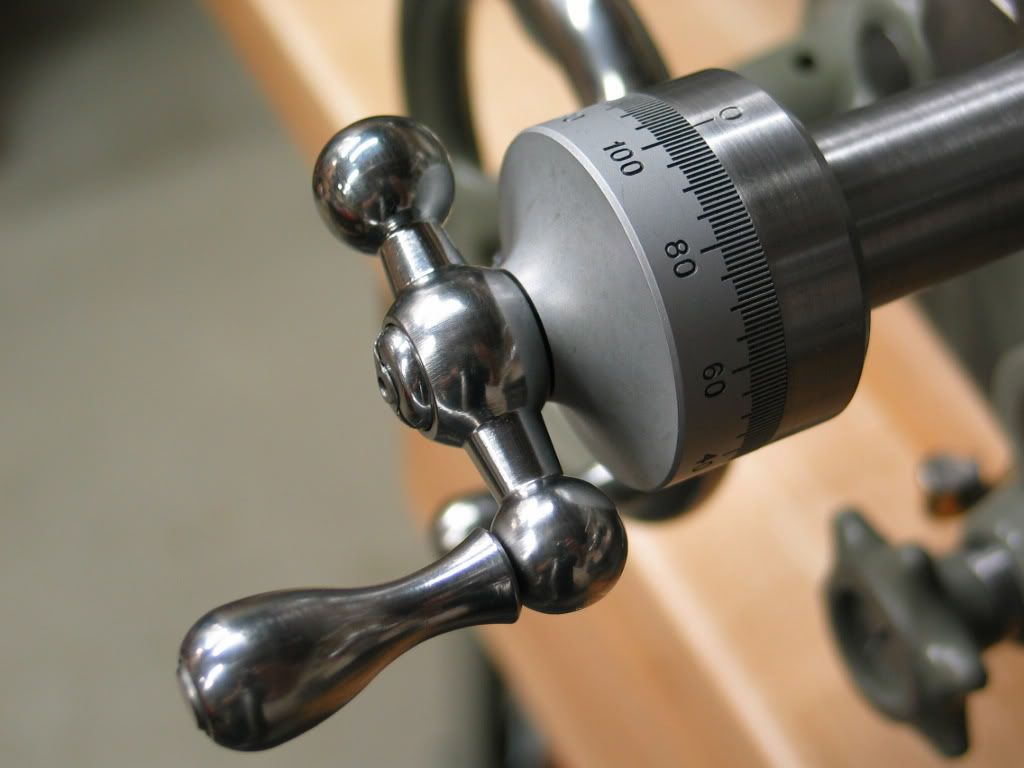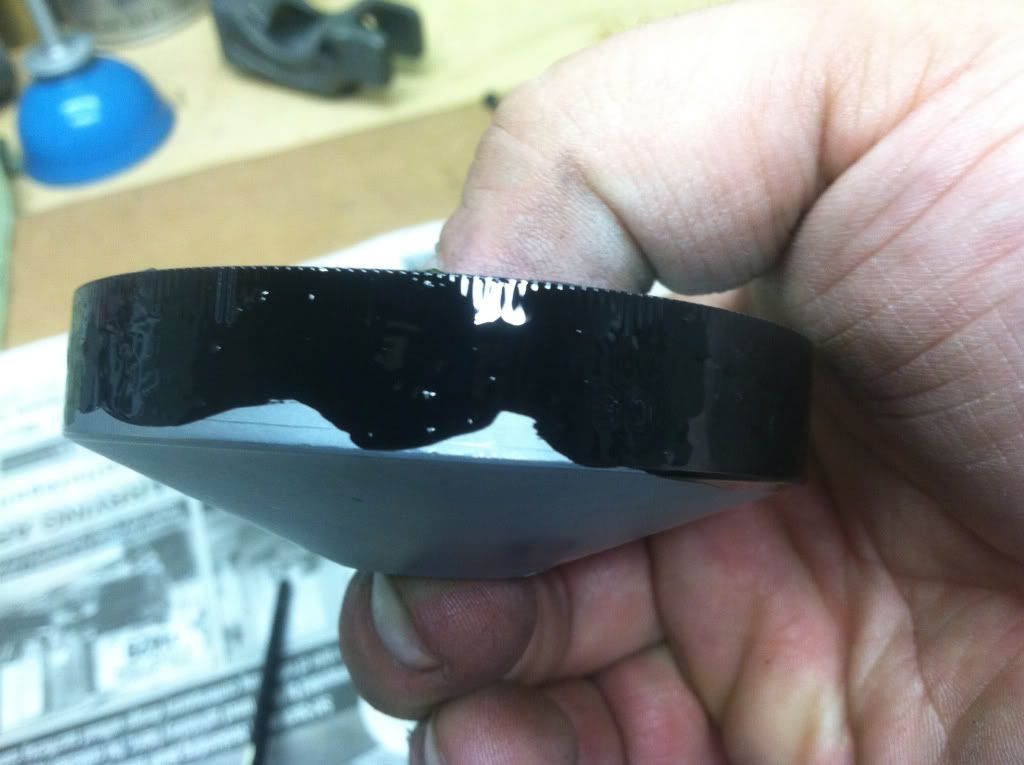using the geared shaft?
I plan on doing this to my 11" R model cross slide, but somehow it seems different looking than the 9s or 10s?
Did you in fact use the original gear shaft, and made the outer shaft longer?
That is what I plan on doing , I think the shaft on the 11" is larger than 3/8" , I think?
Also is seems to me that the busing thread on the 11" is farther up in the slide than just next to the front edge, but will have to look closer tomorrow?
I replaced the acme thread today and it went differently than what is described for the 9 and 10s.
Mine had a bare shaft in front of the gear splines for about 1.125 so I cut the threads off in front of that and drilled and reamed it for .350 to just to where the splines start ,, then turned my acme down to that size, polished to press fit and filed the .005 flat on it and coated w/ 680 and inserted it while the acme was still in the chuck, ran the tail stock up behind it and took it on and off until I got all the air out and all the glue in. then tightened the tails stock up on it till tomorrow and will drill for a taper pin, I think I have a #1 and a reamer. my pin will be about .550+ infornt of the splines.
I am almost positive my front part of the shaft is very different, Will try for measurements and pictures tomorrow.
Ron



 . THe dials were purchased from SBLatheman (Thanks Ted
. THe dials were purchased from SBLatheman (Thanks Ted  ) I had roughed out a dial but couldn't really find a way to accurately index it and cut it on the lathe that I thought worked. I have no mill.........yet. So for about the same price as some sort of jig and number punch set I was able to get two 1.750 200 Div stock dials. So picture time! Unfortunately I lost the pictures of cutting the busshing out of the 2" stock I used. All metal is 12L14.
) I had roughed out a dial but couldn't really find a way to accurately index it and cut it on the lathe that I thought worked. I have no mill.........yet. So for about the same price as some sort of jig and number punch set I was able to get two 1.750 200 Div stock dials. So picture time! Unfortunately I lost the pictures of cutting the busshing out of the 2" stock I used. All metal is 12L14.














